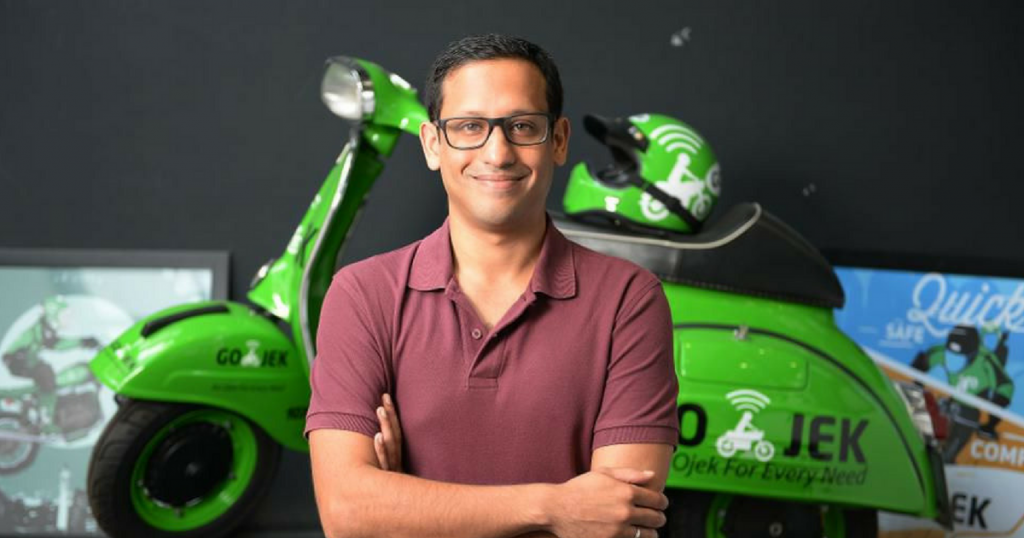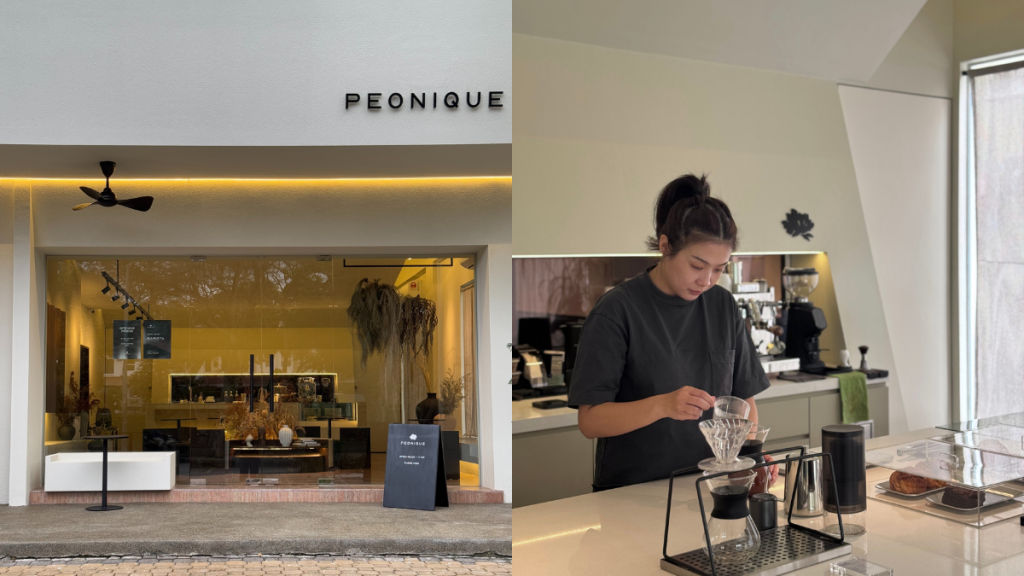Update [20 August 2018]:
On Friday (17 August) CEO of Go-Jek, Nadiem Makarim, told the press that the company is about to reach profitability in all aspects of its business except transportation.
He expects the company to be “fully profitable ‘probably’ within the next few years” and has received “strong funding interest” from its investors as it looks to expand aggressively.
Earlier in May, Go-Jek announced that it would invest US$500 million to enter Singapore, Vietnam, Thailand, and the Philippines by September.
On 1 August, Indonesia’s first unicorn launched in Vietnam and is currently having a recruitment drive for motorcycle drivers in Thailand.
Makarim shared that since the launch in Vietnam, the app has attained 15% of market share in Ho Chi Minh.
He also expresses confidence in Go-Jek’s launch in Singapore as overseas ride-hailing startups have not quite taken off here yet, saying, “We’re bringing back choice. The Singapore government is particularly eager to bring back competition.”
On Grab’s partnership with online grocer HappyFresh as part of its plans to expand in Indonesia, Makarim said with a laugh, “Mimicking Go-Jek’s strategy is the highest form of flattery.”
Go-Jek is reportedly in talks to raise US$1.5 million in a new financing round in June this year and was valued at US$5 billion in a previous fundraising.
In March this year, the firm was thinking about a domestic IPO.
Go-Jek has also set up Go-Ventures, its venture capital arm.
—
Not much is talked about Go-Jek here in Singapore, which is known primarily for its motorcycle-taxi service in Indonesia.
When Go-Jek opened an office in Singapore last year, sparking speculations that they might roll out their signature service here, the Land Transport Authorities (LTA) had put those rumours to rest stating that “motorcycles are not allowed to be used for point-to-point transport services”.
Early this week, a shareholder of Go-Jek has revealed that the Indonesian startup is rolling out its Go-Car service in Singapore following news of the Grab-Uber merger.
Uber’s services in Singapore are slated to end by 8 April, according to initial reporting, but consumers and drivers are still on tenterhooks as the Competition & Consumer Commission Singapore (CCCS) are still reviewing their proposed interim measures.
The measures released 30 March require Grab and Uber to “maintain their pre-Transaction independent pricing, pricing policies and product options” until they reach a conclusion on whether the merger has “infringed” on the Competition Act.
At the moment, this means everything is status quo until 8 April, or until the CCCS has finished their investigations.
In the meantime, let’s find out more about Grab’s potential rival in Southeast Asia and what we can expect on its arrival in Singapore.
1. A Brief History Of Go-Jek

This could be common knowledge to most, but Go-Jek’s name is a wordplay on the Indonesian term for motorcyle-taxis, ojek.
CEO and founder Nadiem Makarim told Tech In Asia in 2015 that Go-Jek began as a call centre in 2010 for customers to get ojek drivers “on-demand”. Makarim had recruited the first 20 drivers himself.
Then those 20 drivers became recruiters themselves.
Makarim said growth was “organic” as he had “[marketed] just to friends and family”.
He enrolled in an MBA programme at Harvard Business School in 2009, and Go-Jek’s humble beginnings was described as a summer “pilot project” for him.
This summer project of Makarim’s laid rather still for four years. It was in operations but he revealed that it wasn’t churning much revenue.
During those four years, Go-Jek was placed under the care of Jurist Tan and Brian Cu, who were “running the firm part-time”.
After Makarim’s stint at Rocket Internet, where he was managing director of Zalora Indonesia and helped the early team at Lazada Indonesia, he decided to focus full-time on Go-Jek.
That decision was fuelled by investors’ interest in Go-Jek in 2014, but both Tan and Cu were unable to commit to Go-Jek full-time and were bought out of the company.
2. The Transformation

2015 would probably be the year of breakthrough for Go-Jek.
Its mobile app on the Android and iOS app stores quickly became the “most popular free app” in Indonesia.
By mid-2015, Makarim had already announced the launch of Go-Food, its food delivery service and were planning to launch Go-Mart, a grocery delivery service that is similar to honestbee’s and RedMart’s core services.
In 2016, Go-Jek raised over $550 million, according to Reuters.
That year, they also entered the FinTech space with the introduction of Go-Pay, an e-wallet that can be used to pay for any of the services on the Go-Jek app.

Those services included Go-Car, Go-Massage, Go-Clean, just to name a few, and as I understand from this, they are parked under Go-Life, the lifestyle arm of Go-Jek.
The company decided to make Go-Life a separate app in 2017, which founder of Go-Life, Dayu Dara Permata, said would “make expansion much faster and more dynamic” for Go-Jek as a transport and logistics provider and Go-Life as an on-demand lifestyle service provider.
Like a caterpillar turning into a butterfly, Go-Jek grew from an ojek-hailing call centre into an all-in-one digital platform.
The company was worth US$2.5 billion by 2017.
3. Recent Happenings

China’s Tencent invested $1.2 billion in Go-Jek in 2017, according to Techcrunch, bringing its valuation up to $3 billion.
Early this year, Go-Jek received a fresh injection of funds worth $1.2 billion by Alphabet Inc’s Google and Singapore’s Temasek Holdings in a fundraising round, which values the company at approximately $4 billion.
In an interview just last month, Go-Life Founder Dara said the company is considering “spinning off” her department “into a separate business entity and raise its own funds”.
It was reported that the app has 3 million users in 25 Indonesian cities since its launch last year.
She promised something to look forward to on the discussions of the spin-off by June and has revealed that the company will be introducing “at least eight new services”.
Dara also expressed hope for the company to “grow 20 times this year alone” and to expand the number of cities it’s available in to match Go-Jek’s presence in 75 cities.
Go-Life will be testing a “booking model”, that lets users schedule massages or cleaning services, unlike Go-Jek’s on-demand model.
“If we have a different platform, then we can have our own speed in launching new features and new products. It also serves as a safe and secluded testing ground and minimises risk to the Go-Jek app,” she explained.
4. Its Longtime Rivalry With Another Green Label
It’s not news about the longstanding rivalry between Go-Jek and Grab.
Their founders were classmates at Harvard Business School and Makarim had regarded Grab’s Anthony Tan “one of [his] closest friends” back then.
“We were always consulting each other on our businesses. I was going to take over bikes and he was going to take over cabs,” he told Tech In Asia in 2015.
But of course, that consensus didn’t last long when GrabBike and Go-Car came into existence and into their respective markets.
Yesterday (3 April), the Indonesia transport minister had mandated both Go-Jek and Grab to be registered as transportation companies. They are listed as a “vendors business”.
Perhaps, this move was introduced to make competition fairer in Indonesia following news of a tariff conflict that affects ojek drivers who are on the Grab and Go-Jek platforms.
With the arrival of Go-Car in Singapore and the diminished presence of Uber in Southeast Asia, Go-Jek seems to want a slice of Grab’s pie here.
Weighing In On Go-Jek’s Opportunities Here

In a report published by Techcrunch in 2016, the value for all of Southeast Asia markets for online rides in total is projected to go over $1 billion by 2025, with Indonesia “[becoming] the largest (online rides) market due to population size”.
Number of Southeast Asia users are estimated to reach 460 million 2020, which makes the region the “world’s fastest growing internet market”.
Go-Jek’s entrance to Singapore is probably a “welcomed one”, people in the industry told Marketing Interactive, but they warned this – “Caution needs to be exercised in order to not look too cheap.”
This is because consumers prefer a “competitor to keep prices and service levels in check”, however Go-Jek’s market positioning had always been rooted in Indonesia which is a market vastly different from Singapore, the article explained in length.
Pre-merger, Grab was seen as the local underdog pitting against the “big bad American competitor” Uber, and therefore accumulated plenty of trust in Southeast Asia.
Now that Uber is exiting the Southeast Asian market, Go-Jek has plenty of opportunities to present itself as the “better” Southeast Asian choice.
And if the Indonesian company plays its hands correctly, it could displace Grab “quite easily” because “Go-Jek feel genuinely from Southeast Asia” said Nick Foley, Landor’s President of Southeast Asia Pacific and Japan.
The CCCS has also cited Go-Jek and ComfortDelGro “as possible competitors of Grab after Uber’s exit from Singapore”, according to this report.
But Grab seems ready to take on the competition as Lim Kell Jay, Head of Grab Singapore, told The Business Times that it will continue its “very local approach” and believes that having their largest R&D centre here would help them quickly improve the app.
Director of the NUS-LTA Transport Research Centre, Lee Der-Horng, reckoned that it would not be surprising should ComfortDelGro choose to partner up with Go-Jek as “[they] complement each other”.
Right now, it seems the sentiment settles on one thing: Go-Jek’s two-wheeler-hailing service is highly unlikely to happen in Singapore.
In my opinion, I don’t think Singaporeans will miss the lack of Go-Jek’s motorcyle-taxi service, as travelling in the comfort of a car has become a norm now.
But I think Singaporeans would look forward to using the rest of Go-Jek’s services, especially Go-Life.
If put on a level playing field, Go-Jek’s wider array of unique services as compared to Grab’s would make it the choice platform for consumers.
However, in order to achieve that, they have to first, win the trust of users here and prove they’re reliable.
What are you looking forward to when Go-Jek arrives in Singapore?
Featured Image Credit: Forbes











